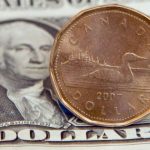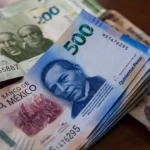Copper swung between gains and losses on Tuesday amid the ongoing fiscal impasse in the U.S. but progress in negotiations on Monday spurred hope that the October 17 deadline wont be hit. Expectations that data on Friday will show Chinas economy expanded at a faster pace in the third quarter also underpinned the market.
On the Comex division of the New York Mercantile Exchange, copper futures for December settlement fell by 0.41% at 10:00 GMT. Prices held in range between days high and low of $3.307 and $3.283 per pound respectively. The industrial metal rose by 1% on Monday but trimmed its weekly advance to 0.6% on Tuesday.
Copper swung between gains and losses as the ongoing political deadlock in the U.S. continued to dampen market sentiment. Henry Liu, a Hong Kong-based analyst at China Merchants Capital Management Ltd., said for Bloomberg: “Uncertainty is still there on the U.S. debt talks.”
Despite the lack of a deal between Democrats and Republicans on raising the nation’s debt ceiling, progress in negotiations between Republicans and Democrats on Monday fanned optimism for a resolution before the October 17 deadline. Senate Majority Leader Harry Reid said he is very optimistic that an agreement can be struck this week. The potential accord would extend the borrowing limit through February 7, fund the government through January 15 and require a House-Senate budget conference by December 13. The Congressional Budget Office said that the U.S. will run out of money and start missing payments on its obligations at some point between October 22 and October 31.
The industrial metal was well supported recently after data by the Chinese General Administration of Customs showed the nations copper imports rose by 18% to 457 847 tons in September from a month earlier as lower prices boosted orders. This was the highest level since March 2012. Total inbound shipments surged to 1.26 million tons in the third quarter, 21.4% above the preceding period.
On Monday, China’s National Bureau of Statistics reported that inflation picked up in September. Year-on-year, consumer inflation rose by 3.1% from 2.6% in August, exceeding analysts’ projections for a 2.9% increase. On a monthly basis, China’s Consumer Price Index advanced by 0.8%, beating both expectations and last month’s reading of 0.5%. Producer inflation declined by 1.3% after it fell by 1.6% in August, outperforming projections for a 1.4% decrease.
In economic news from Europe, the Euro zones industrial production rose by 1.0% in August, beating analysts forecast for a 0.6% advance. Julys reading was revised to a 1% contraction after being initially estimated at -1.5%. Year-on-year, the single-currency blocs industrial output declined by 2.1% from the previous period, beating projections for a 2.7% decline. Julys reading was revised upward to -1.9% from -2.1%.
On Tuesday, Germanys ZEW Economic Sentiment index, which measures investors and analysts economic expectations, rose for a third straight month to 52.8 in October from 49.6 in September, beating forecasts to remain flat. This was the highest reading since April 2010, signaling that Europes leading economy is withstanding the turbulence caused by the U.S. fiscal stalemate. Meanwhile, the Euro zones ZEW Economic Sentiment index rose to 59.1 from 58.6 in September but underperformed expectations for a surge to 59.4.
Market players are also awaiting the release of key Chinese economic data on October 18. China’s National Bureau of Statistics will likely report that the country’s economy grew by 1.9% in the third quarter, up from 1.7% in the previous three months. The median forecast of 21 analysts surveyed by Reuters showed that year-on-year China’s economy has expanded by 7.8% in the third quarter, up from 7.5% in the previous period.
The national agency is also due to release the country’s retail sales which likely inched up to 13.5% in September from 13.4% in the preceding month. Industrial production is projected to have expanded by 10.1%, slightly below August’s 10.4% advance.





